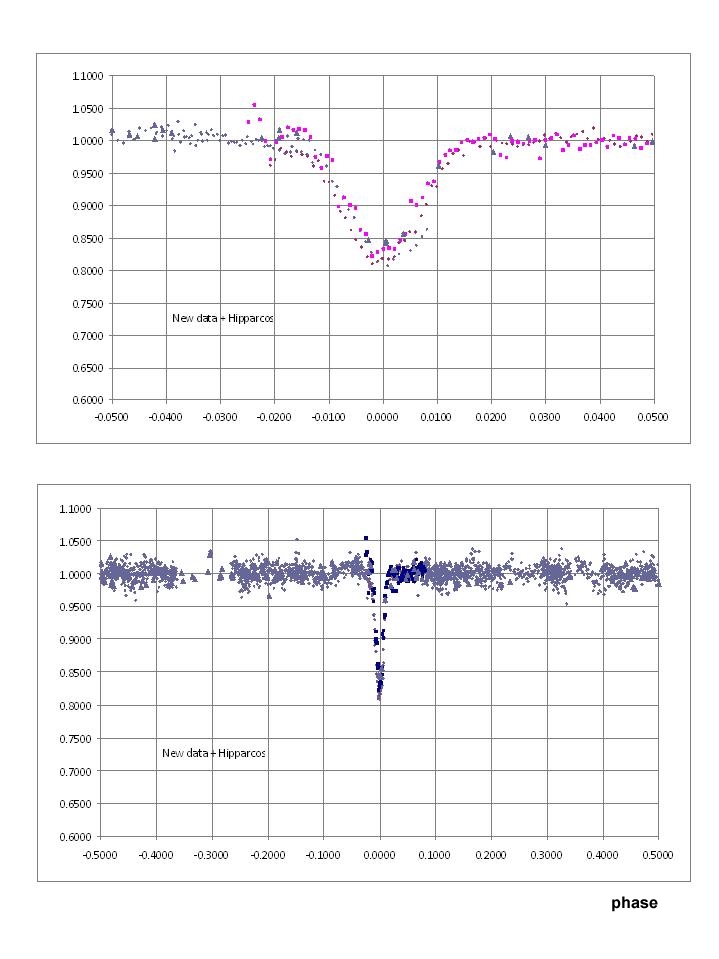| Article in PDF |
"Peremennye Zvezdy", Prilozhenie, vol. 11, N 18 (2011) |
Period Solution for "Unsolved Variable" HIP 44683
D. Davies
Torrance, USA
| ISSN 2221–0474 |
Received: 4.02.2011; accepted: 26.04.2011
(E-mail for contact: Donald.Davies@Gmail.Com)
| ||||||||||||||||||||||
Remarks: |
| There were two eclipses detected by HIPPARCOS, separated by 311 days. The author
detected an eclipse in 2010, and two more in 2011 which allowed the period to be
determined.
The depth of the eclipse is 19%, with a duration estimated to be 2.86 hours. No secondary
eclipse was detected, even though there was almost complete phase coverage.
The data was acquired with an unfiltered CCD behind a 50-mm focal length lens mounted on a small computer-controlled telescope that was used solely for tracking. As each frame was acquired, the CCD image was analyzed to determine any tracking errors and apply corrections to the telescope pointing. With this set-up, the telescope could be left unattended and track the target all night, acquiring about 10,000 frames per night. The telescope is located on a rooftop in Torrance, California. Each new point on the light curve is the average of 100 4-second exposures, where the normalized relative intensity was obtained by taking the ratio of the target photometry to reference stars in the same frame, and normalizing that ratio to the average out of eclipse value. The reference stars used were HIP 44925 and HIP 45801. |
Light Curve
Light curves for HIP 44683. HIPPARCOS data indicated by triangles. Data Source |